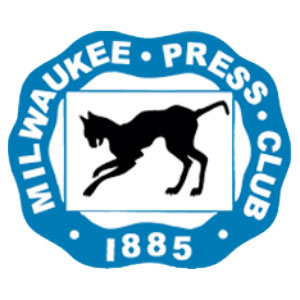By Tony Smithson
Vice President of Printing Operations, Bliss Communications

With the Trump administration’s announcement of preliminary duties on Canadian newsprint producers up to 32 percent, publishers are left wondering how to deal with resulting price increases.
To make a difficult situation even worse, these actions come in the midst of a historically tight newsprint market, with suppliers not able — or in some cases willing — to meet printer and publisher demand for newsprint.
Kruger Newsprint recently announced that they will not be accepting orders in the U.S. for the month of August. While many publishers who are not buying from Kruger may feel they have “dodged a bullet”, other suppliers will work to try to fill those orders, so there will be ripple effects throughout the market. This could be a sign of Kruger’s rumored permanent exit from the newsprint market.
What’s a publisher to do?
The Way Forward
Believe it or not, there is a way forward. I would summarize the steps as “Advocate, Plan and Prepare, and Adjust.” Whether you print your own publication or have an outside printer will change your strategy slightly, but the concepts are the same.
Advocate
To start with, the best way to deal with a problem like this is to fix it. It is still possible to make this go away, but it will take a lot of help.
The National Newspaper Association has joined with other associations including News Media Alliance, Printing Industries of America, and a host of others to form the Stop Tariffs On Printers and Publishers (STOPP) coalition. Supporting the coalition is a good first step, and they will be providing resources to leverage the power of the newspaper industry. In addition to a survey about the economic effects of the tariffs on newspapers, STOPP will be providing marketing materials to engage newspapers’ audiences in getting the word out about the damage these tariffs are causing.
Newspaper publishers play a key role in their communities, and because of that they generally enjoy greater access to elected officials than the average citizen. Take advantage of that access and reach out to your elected officials to explain the damage that the tariffs are causing, and how they will affect your business and your community. WNA has resources available to help you explain your position and what your Congressmen and Senators can do to help.
Plan & Prepare
Many community newspaper publishers no longer print their own products, and that has an impact on how you deal with the current situation.
For those who do print their own, the obvious first question is, “Can’t I just buy paper from a company that isn’t being assessed a tariff or who is being penalized at a lower level?” The answer is not quite that simple.
The newsprint market is very geographic, because the shipping cost of a roll of newsprint can quickly outweigh the cost of the paper itself. Mills generally ship only to a limited geography, which they refer to as their “footprint.” A mill in another region might have slightly better pricing, but it may not be willing to ship to your location.
In addition to geography, the tightness of the market is a huge factor. Most mills are running at 97 percent capacity and have pre-sold all of the tonnage they are producing. Low price mills are receiving lots of phone calls these days, but those calls will generally end in frustration.
The reality is that if you have a good newsprint supplier relationship, you should do whatever you can to maintain and improve that relationship: place your orders early — four to five months in advance is recommended. Be patient with late deliveries. And, above all else, make sure you have your bills paid up current. The first customers who will be cut off during a tight supply are those who are behind on payments.
If you are not part of a purchasing group or cooperative, now might be a good time to check one out. While being a member of a cooperative like PAGE won’t necessarily guarantee your supply, it goes a long way in providing resources to help you out.
If you are using a contract printer, now would be a good time to ask some very specific questions of your printer. Where do they get their newsprint supply? Are they buying directly from the mill, or are the buying on the secondary market, called the “spot market”? Are they keeping up with their payments to their suppliers? If your printer doesn’t have a good answer, or doesn’t want to answer these questions, it would be a good time to start shopping for a new situation.
Adjust
While there is still a chance that the newsprint tariffs will be rescinded, many of the effects they have caused in the newsprint market will be permanent. For example, if Kruger exits the market, it is unlikely that they will ever start making newsprint again.
With that in mind, long-term adjustments should be considered.
Does your new Ford Explorer look like it did ten years ago? No? Then why should your newspaper? Format change can provide an opportunity for newspapers to both freshen up their look and save money. Smaller web sizes use less paper, and lighter basis weights can help trim pounds as well.
If you are working with a contract printer, ask their advice on format, but don’t stop there. Printers will generally steer you to the format that best fits their equipment, but others in the newspaper community may be trying something that you haven’t considered.
Running a newspaper in the current newsprint environment may feel like being locked in a phone booth with a tornado, but with planning and resourcefulness, newspapers can make it through.



